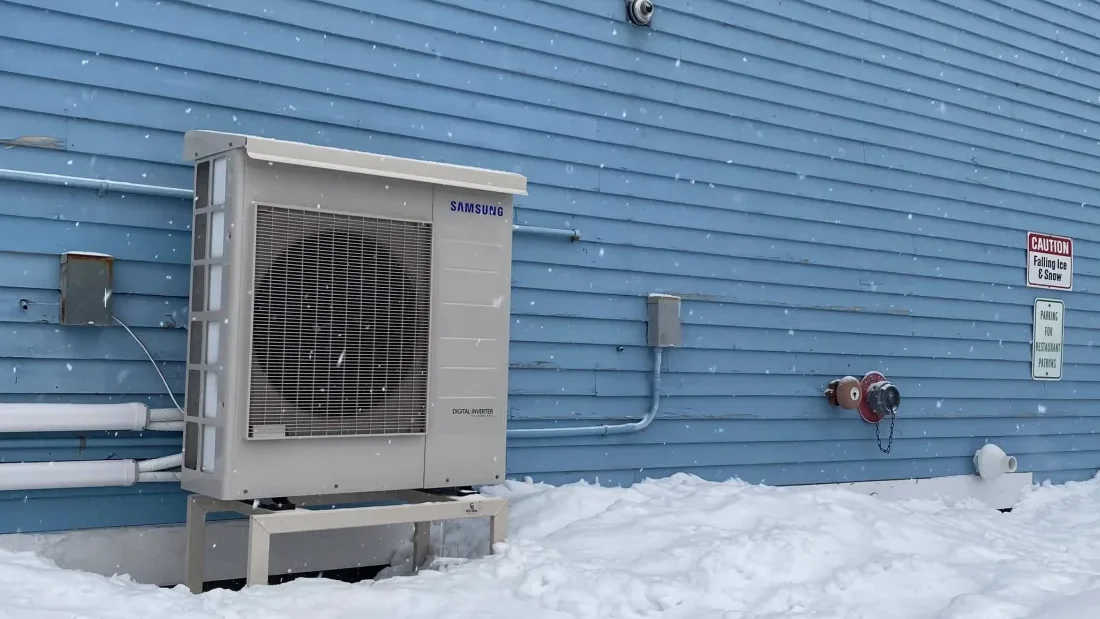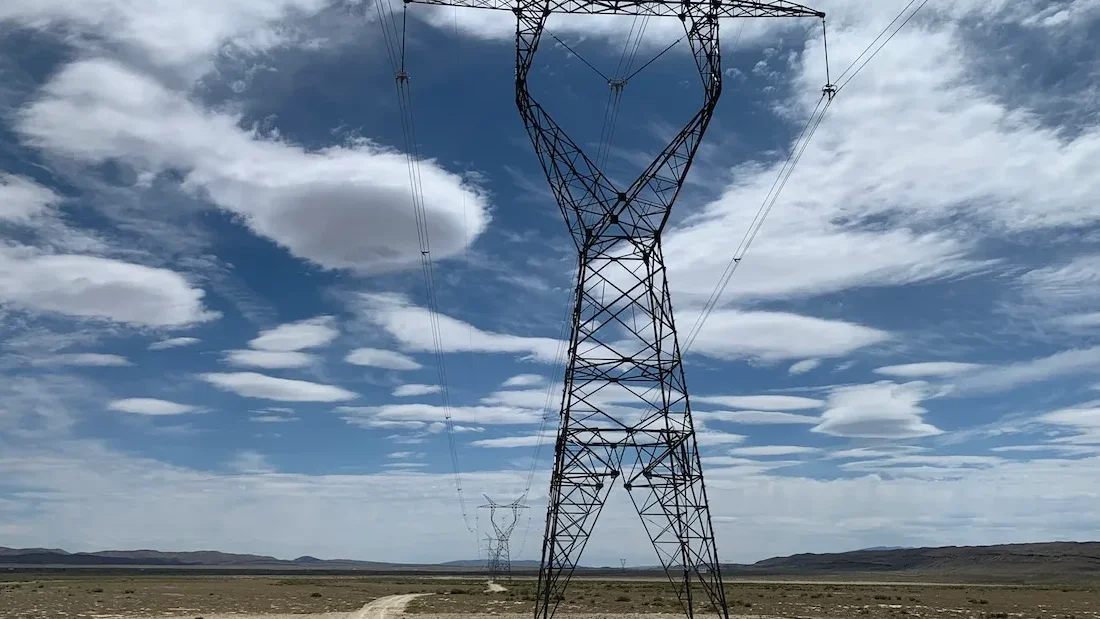
HYDROPOWER: Environmentalists and legislators from Pennsylvania’s York and Lancaster counties come together to oppose the $2.3 billion Cuffs Run hydroelectric project, citing economic, ecological and cultural concerns. (York Dispatch, WITF)
POLICY:
FINANCE:
SOLAR:
EMISSIONS: Residents of Pennsylvania’s Mon Valley wait to see how much of a difference the latest legal settlement with the highly air-polluting Clairton Coke Works will make in their lives. (Public Source)
OFFSHORE WIND:
TRANSIT:
FLOODING:

STORAGE: Nearly a quarter of the world’s battery storage systems have defects related to fire detection and suppression, an advisory firm estimates. (Utility Dive)
OFFSHORE WIND:
OIL & GAS:
PIPELINES: The FBI began tracking Native American opponents of the Keystone XL pipeline as early as 2012 as part of a sweeping law enforcement strategy to counter civil disobedience aimed at fossil fuels. (Grist)
ELECTRIC VEHICLES: Consultants trace Republican opposition to electric vehicles back to the early 2010s, when the federal government first offered EV companies loans to get off the ground. (E&E News)
CLIMATE:
SOLAR: A company encourages Black farmers in the Southeast to lease some of their property for solar projects to add a new source of income. (Civil Eats)
CLEAN ENERGY:
GEOTHERMAL: The Biden administration awards $60 million to three enhanced geothermal energy pilot projects in California, Utah and Oregon. (The Hill)

Nine states just made a big electrification commitment: They want electric heat pumps to make up 90% of their residential heating, air conditioning and water heating sales by 2040.
Officials in California, Colorado, Maine, Maryland, Massachusetts, New Jersey, New York, Oregon and Rhode Island signed on to the agreement last week. And while it’s legally nonbinding and the states haven’t set aside any funding to achieve the goal, it’s a step toward making heat pumps the norm for homeowners when they install new HVAC equipment.
The residential sector is a big contributor to U.S. greenhouse gas emissions, especially in cold Northeastern states that heavily rely on fossil fuels for heating. Heat pumps meanwhile use electricity to both heat and cool homes, and while much of that electricity may come from fossil fuels for now, they use that power far more efficiently than gas boilers. They also help keep natural gas and its health and safety risks out of homes.
And if you’ve got questions about just how well electricity can heat a home, this study from 2022 shows heat pumps kept Maine residents cozy even when temperatures dropped below freezing. It’s a big goal, but another record year for heat pump sales suggests it’s within reach. An industry group reported the electric appliances outsold natural gas furnaces by 21% in 2023, marking the second year in a row that heat pumps have outsold gas.
🏭 Cutting soot, saving lives: The U.S. EPA is tightening airborne soot regulations to reduce coal plant and diesel truck pollution, a move expected to save as many as 4,500 lives in 2032 and bring $46 billion in health benefits by that year. (E&E News)
Read more: Air quality monitoring data suggests Arizona, California, Pennsylvania and Texas will have the hardest time meeting the new soot limits, though 99% of counties will likely comply with the rules by 2032. (E&E News, Utility Dive)
📈 The IRA’s price tag is growing: The estimated cost of implementing the federal climate law has more than doubled since its passage in 2022, largely because forecasters think its clean energy, electric vehicle and other incentives will be more popular than originally expected. (The Hill)
🚨 ‘Dangerous greenwashing scheme’: Democratic senators call on federal regulators to crack down on “responsible” and “certified” natural gas claims, saying the selling of low-emissions methane is a “dangerous greenwashing scheme” that undermines the clean energy transition. (The Guardian)
💧 Keeping hydrogen clean: As some developers look to weaken proposed rules for federal clean hydrogen tax credits, environmental advocates warn that could divert existing clean energy generation to hydrogen production and prolong fossil-fuel-fired generators. (Energy News Network)
🏫 Stolen lands’ legacies: State trust lands taken 150 years ago from Indigenous territories in Western and Midwest states provide public universities with millions of dollars of annual funding, largely via oil and gas drilling. (Grist)
🚚 Long road ahead: Waning interest in Ford’s F-150 electric truck reflects a broader cooling market for electric vehicle sales, though experts still predict long-term demand to grow. (New York Times, NPR)
🌎 Climate rights: Several states are considering amending their constitutions to guarantee residents’ right to a safe climate amid a nationwide campaign by environmental advocates. (The Hill)
☑️ Voting for clean energy: The World Resources Institute says the 2024 presidential election will perhaps be the biggest driver of the U.S. clean energy sector’s near-term future. (Utility Dive)

CLEAN ENERGY: The federal government is looking for carbon-free electricity to power defense and other government facilities in what could be one of the administration’s biggest clean energy procurements. (Axios)
ALSO: The World Resources Institute says the 2024 presidential election will perhaps be the biggest driver of the U.S. clean energy sector’s near-term future. (Utility Dive)
ELECTRIC VEHICLES:
OIL & GAS: California regulators propose to stop issuing new permits for hydraulic fracturing and other oil and gas well stimulation treatments in a move that would eventually phase out fracking statewide. (Courthouse News)
ENVIRONMENTAL JUSTICE:
CARBON CAPTURE: Efforts to pay farmers for sequestering carbon in their soil are hampered by questions over just how much carbon dirt can store. (Grist)
OVERSIGHT: President Biden officially makes Willie Phillips the chair of the Federal Energy Regulatory Commission, while FERC member Allison Clements says she won’t return when her current term expires. (The Hill, Politico)
TRANSPORTATION:
NUCLEAR: Federal money could boost efforts by Michigan and other states to restart or keep aging nuclear power plants operating as a source of carbon-free electricity. (Stateline)
GRID: Western utilities consider competing options for establishing a regional transmission organization. (E&E News)
SOLAR:
COMMENTARY: The Biden administration’s pause on new LNG export approvals won’t stop a massive buildout already in progress, an energy professor writes. (The Conversation)

Environmental agencies in nine states will work together to reduce planet-warming carbon emissions by making electric heat pumps the norm for most new home HVAC equipment sales by 2040.
The memorandum of understanding, spearheaded by the inter-agency nonprofit Northeast States for Coordinated Air Use Management, or NESCAUM, was released today and signed by officials in California, Colorado, Maine, Maryland, Massachusetts, New Jersey, New York, Oregon and Rhode Island.
While it is not legally binding and does not commit particular funding, the agreement calls for heat pumps to make up 90% of residential heating, air conditioning and water heating sales in these states by 2040.
An interim goal of 65% by 2030 is based on last fall’s target from the U.S. Climate Alliance, a group of 25 governors, to quadruple their states’ heat pump installations to 20 million in the same timeframe.
The residential sector is one of the top two or three contributors to greenhouse gas emissions in most of the East Coast states signing on to the agreement, driven in part by cold climates and a heavy reliance on oil and gas for home heating. Residential emissions rank far lower in the Western states participating.
In a press release, NESCAUM emphasized the harmful smog, haze and ozone driven by nitrogen oxide and particulate emissions from fossil fuel combustion, calling buildings “a hidden source of air pollution.”
Senior policy advisor Emily Levin said states must move quickly to help residents replace these fossil-fired HVAC and water heating systems with heat pumps in time to limit the harms of global warming.
“You may only have one more crack at these buildings between now and 2050, because these are long-lived pieces of equipment — they can last 10 or 20 years,” she said. “So we really can’t miss our opportunity.”
Matt Casale, senior manager of market transformation with the Building Decarbonization Coalition, said the new agreement’s market-share approach adds specificity to how states will meet existing, number-based goals for heat pump installations.
“The idea is to send a clear signal to the market that heat pumps are the future of home heating and cooling, while reflecting the urgency with which we need to act to meet GHG emissions reduction targets,” he said.
Manufacturers have called for this kind of “long-term signal,” said Levin — “they need to plan, they need to make significant investments.” She said agreements like this show companies that “this is the direction we need to go in” and that state governments are committed to helping make the transition happen.
“Greater demand for heat pumps will also put pressure on installers,” Casale added. “We will need policies that both grow and further develop the workforce. The MOU is a great opportunity to bring them in more directly, learn from them, and talk about their needs.”
Under the new agreement, participating states will “collaborate to collect market data, track progress, and develop an action plan within a year to support the widespread electrification of residential buildings,” according to NESCAUM.
Afton Vigue, a spokesperson for the Maine Governor’s Energy Office, said taking advantage of consolidated industry data will help prevent another new reporting requirement for participating states and will help align with varying state metrics.
The states’ forthcoming action plan is expected to include emphasis on workforce development and supply chain constraints, which have tempered otherwise strong heat pump progress in states like Maine.
“It really does focus on that element of driving the market and collaborating with manufacturers,” Levin said. “Right now, states don’t really necessarily know … how their heat pump market is developing. Creating systems to bring visibility to that, provide insights into that … it’s a really important element.”
The agreement tees up annual reports on each state’s progress toward the 2030 and 2040 goals, and schedules a 2028 check-in about any necessary adjustments.
“A greater focus on consumer education, workforce development, and affordability will be critical to the success of the transition,” said Casale. “This means getting the most out of the Inflation Reduction Act and other incentive programs, but we also need to answer the questions of how this solution best serves multi-family buildings, renters and others for whom purchasing a new system isn’t entirely within their control.”
In the agreement, the states pledge to put at least 40% of energy efficiency and electrification investments toward disadvantaged communities — those facing high energy cost burdens or disproportionate pollution — in line with the federal Justice40 program, which underlies similar rules for the IRA.
Working through NESCAUM and other existing groups, the participating states will brainstorm tools for reaching these goals, potentially including funding for whole-home retrofits, building code enforcement and other uniform standards, data collection, research projects, use of federal resources and more.
“It’s going to look a little different in every state,” Levin said. “But they’re committing to collaborate and to advance a set of policies and programs that work for their state to accomplish those broader goals.”
This could include adapting or building on each other’s approaches. Levin highlighted Maine and California as having successful models for consumer outreach and heat pump market coordination, and said Maryland has shown strong impact and ambition around clean building performance standards.
Maine, which relies more on heating oil than any other state, is among the participants with existing heat pump goals in their climate plans. The state surpassed an initial target — 100,000 installations by 2025 — last year, and now aims to install 175,000 more heat pumps by 2027.
Officials in Maine have said that heating oil use appears to be slowly falling in concert with increasing use of electricity for home heat. Vigue said the new agreement lines up with existing state goals and will help Maine “bolster our ongoing collaboration with other states, share experiences, and see where gaps may exist.”

Member towns in New Hampshire’s year-old Community Power Coalition are reaping the benefits of banding together to buy electricity on their own.
As of Feb. 1, residential and small commercial customers in the coalition’s 16 active member communities will pay a base electricity rate of 8.1 cents per kilowatt-hour, a 26% reduction from their already-competitive rate of 10.9 cents per kWh.
Another 29 communities are planning to enjoy the lower rate after they launch their own programs this spring, effectively making the statewide coalition the second-largest electrical supplier in the state.
“The community power program has been a great success,” said Jackson Kaspari, resilience manager for the city of Dover and a member of the coalition’s board of directors. Since Dover launched its program last October, for example, residential and commercial customers have saved an estimated $500,000, he said.
The new rate, which will be in effect through July 31, is lower than the default residential rate offered by every other electric utility in the state: 24% below Unitil, 20% below the New Hampshire Electric Co-op, 17% below Liberty, and 2% below Eversource.
The estimated savings for customers in all member communities for the next six-month rate period is around $3.2 million, said Brian Callnan, the coalition’s first chief executive officer, and formerly the vice president of power resources and access at the New Hampshire Electric Co-op.
New Hampshire’s community power law, signed into law in 2019, authorizes municipalities to procure their own power, instead of buying it through their local distribution company. The distribution companies continue to deliver the electricity and handle billing.
The coalition uses the collective buying power of all of their residents and businesses to secure competitive rates in the wholesale market. Their ability to be flexible in the timing of energy procurements enables them to find value, Callnan said.
“We don’t have to purchase power at a given time period,” he said. In contrast, “the investor-owned utilities don’t have that flexibility” in their regulated procurement process.
The coalition’s base rate — called the Granite Basic — includes 24.3% renewable content, the minimum required under the state’s renewable portfolio standard. But customers may choose to pay slightly higher rates for greater proportions of renewable power.
Opting up to the highest level — the Clean 100, with 100% renewable power — would still only raise the average residential customer’s bill an estimated $29 a month over the basic rate, while eliminating more than two tons of carbon emissions per year, according to John Tabor, chair councilor of the Portsmouth Energy Advisory Committee.
“Portsmouth Community Power customers could reduce their carbon footprint from electricity the same as if they converted their homes to solar panels, at a fraction of the cost,” Tabor said in a statement released at the time of the new rate announcement.
Currently, about 90% of customers have chosen to stay with the Granite Basic product, Callnan said.
The revenue from electricity sales cover the nonprofit coalition’s operating costs, with the balance going into reserves. Every member community is allocated their portion of the collected reserves in the nonprofit. Member communities will also have an opportunity to create a reserve fund on their own to pursue other energy-related projects in their towns, such as improving building efficiency or developing solar projects.
The coalition could potentially partner with a community hosting a solar project and take up some of that power, he said.
“Pretty much all the communities have ideas for projects or are working on projects,” Callnan said. “To me, that’s the exciting part of this — we can really make an impact on how a community uses energy. There are no renewable projects under development from within our communities right now, but we could see that happen in 2025.”
Dover’s energy commission is considering a multi-phased program to improve energy efficiency in their municipal buildings, Kaspari said. They have also evaluated some sites for building solar, such as at the city’s wastewater treatment facility, he said.
“Being a member of the coalition has given us new perspectives on a lot of things and opened the door for information sharing with other municipalities,” Kaspari said. “That’s one of the most powerful aspects of the coalition at this time — leaders in the energy sector talking to each other from across the state.”

ELECTRIFICATION: Chicago Mayor Brandon Johnson plans to introduce an ordinance this week that would ban natural gas hookups in new buildings and homes, a climate strategy facing pushback from a powerful local union. (Sun-Times)
OIL & GAS: Ohio environmental groups are challenging a state commission’s claims that its decisions to allow oil and gas drilling in state parks and wildlife areas can’t be appealed in court. (Energy News Network)
SOLAR:
HYDROGEN: At a mini-village project site in Ohio, Dominion Energy is testing the potential of blending hydrogen and natural gas for appliances. (Spectrum News)
GRID: Federal regulators reject a proposed cap on MISO’s interconnection queue, saying it could hurt the grid operator’s ability to cover potential short-term supply shortfalls. (Utility Dive)
PIPELINES:
OIL & GAS: North Dakota officials estimate that as much as 700,000 barrels of oil production per day was lost over last week during historically low temperatures. (KFYR)
NUCLEAR: The University of Illinois hopes to secure funding and approval to build an on-campus nuclear reactor that would be allowed under a new state law lifting the state’s moratorium on nuclear construction. (Crain’s Chicago Business, subscription)
RENEWABLES: An Illinois Republican proposes a bill allowing counties to reinstate local wind and solar restrictions that were nullified under a 2023 law establishing statewide siting standards. (Ford County Chronicle)
BIOFUELS: The South Dakota Senate unanimously passes a bill allowing gas stations to claim a fuel tax refund of up to 5 cents per gallon of ethanol sold. (South Dakota Searchlight)

Xcel Energy customers in Minnesota will likely soon have good reason to hold off on running dishwashers or charging vehicles until bedtime.
The state’s largest utility is asking regulators to approve a major change to how residential customers have paid for their electricity for decades.
In December, the company proposed moving away from the standard, flat hourly rate that almost all its customers currently pay and replacing it with a variable “time-of-use” rate design that charges more for power during periods of high demand.
Rates between 3 p.m. and 8 p.m. weekdays would be twice the rate customers currently pay, and seven times higher than the proposed overnight “off peak” rate between 12 a.m. to 6 a.m. Other hours of the day would be charged a “base” rate.
Winter electricity would be, on average, more than 30% cheaper for base and peak rates than Xcel’s summer rates. Xcel told regulators that typical customers will pay 17.8% more for electricity in summer and 10.6% less in winter, assuming no behavioral changes in consumption. Xcel customers use roughly 20% less electricity in winter as most currently heat their homes with natural gas.
Xcel wants time-of-use to be the default billing system for all residential customers, though customers could opt-out.
The proposal follows a two-year pilot project Xcel operated in neighborhoods in suburban Eden Prairie and the Longfellow area of South Minneapolis. The company found a modest shift in customers reducing energy in peak periods, enough to support broader adoption across its Minnesota territory, according to Xcel spokesperson Theo Keith.
“This new proposal will make our successful pilot available to more customers,” he said. “During the pilot, we saw that participants saved a modest amount on their energy bills even with a modest increase in overall energy usage. Customers responded to the pilot rate design by shifting some usage away from peak times with the highest energy prices.”
The new pricing structure is possible because of Xcel’s installation of more than 500,000 smart meters that will allow customers to better track their energy use through an online portal, Keith said. The proposal also fulfills a Public Utilities Commission requirement that Xcel move to time-of-use rates, he said.
The concept has parallels with the growth of dynamic pricing by hotels, airlines, ride-hailing services and sports and entertainment tickets. California has been the leader in time-of-use utility pricing, with power companies there using it as the default for billing customers. Several other utilities nationwide have similar rate programs or are studying its potential to help prepare the grid for more electrification and renewable energy. And Xcel’s Colorado subsidiary has begun rolling out time-of-use rates there.
The utility believes that by shifting consumption to later and overnight hours, it can take advantage of the abundant wind energy typically available during those periods, Keith said. Shifting to non-peak times also helps Xcel avoid building more power plants, especially peaker plants that operate only a handful of hours annually but often create high emissions.
Xcel is part of the Midcontinent Independent System Operator (MISO) regional energy market, one of two in the country forecasted to have a “capacity crunch” over the next five years, said Gabe Chan, an associate professor and energy policy expert at the University of Minnesota. He said that trying innovative approaches such as time-of-use to reduce consumption at high demand times will help balance the electric grid.
Citizens Utility Board of Minnesota executive director Annie Levenson-Falk said time-of-use rates could be more fair than the current rate because, under a flat rate, customers pay more than it costs to produce electricity in low-demand periods and less than the cost during high-demand times.
The consumer advocacy nonprofit’s Illinois affiliate found in a study “that time-of-use rates are more equitable” because lower-income households didn’t use much energy in peak periods than higher-income households, Levenson-Falk said.
Using 2016 data from Commonwealth Edison, Illinois’s largest utility company, the report showed that 97% of its customers would save money under a time-of-use plan without making any behavioral changes. They would reduce their bill by an average of 13.2%, with low-income households seeing an additional 1% savings.
Shifting electricity use to base and non-peak hours tends to reduce emissions, too, Levenson-Falk said. Wind energy is widely available at night, while solar energy tops out in the middle of the day. She said that as solar power grows in Minnesota, Xcel could adjust the peak to take advantage of the sun.
But there are drawbacks. Levenson-Falk said customers using power during peak hours will see substantial bill increases. Some low-income households may not have the ability to change consumption patterns. And customers may find it hard not to use electric stoves, heat pumps or water heaters during peaks.
“Are we going to be disincentivizing beneficial electrification?” she asked.
There’s also the problem of reducing peaks during some hours only to create them in other hours. A University of Texas study of 100 Austin homeowners using time-of-use rates found most shifted use of appliances such as heating, ventilation, and air conditioning equipment to non-peak times — so much so that they created a higher residential peak in lower-cost hours.
Xcel’s two-year “Flex Pricing” pilot study that ended in 2022 involved nearly 17,000 ratepayers in Eden Prairie and Minneapolis, with 10,000 in the time-of-use program and the rest in the control group. Working with consulting firm Guidehouse, Xcel discovered in the pilot that electricity demand during peak periods was “modest” in Eden Prairie. In Minneapolis, the same was true in the pilot’s first year before trailing off in year two.
The pilot found a small subsector of participants drove much of the reduction in energy use during peak times. Representing around 10% of the participants, these “highly engaged” customers understood time-of-use rates and made proactive decisions to decrease their electricity use.
Xcel concluded in its regulatory filing that “the demand impact was close to achieving the goal of incentivizing less energy consumption during peak times in a revenue-neutral manner.” The study saw customers increase their energy consumption slightly, shifting electricity use rather than reducing it.
Customer bills in Eden Prairie grew slightly and declined marginally in Minneapolis. Participants paid more than they would at the standard rate in summer and less in winter, but Eden Prairie did not see enough decline to make up the difference. The highly engaged participants made the most progress in seeing their bills decline yet averaged just a $4 monthly decrease.
The pilot’s income-qualified customers, mostly living in Minneapolis, saw bills reduced by 3%. Those customers were “statistically significantly more satisfied with the pilot than the general population was,” Xcel said. “This was like the response from participants who were seniors, renters, or those who use a smart thermostat.”
Matthew Grimley, a University of Minnesota researcher at the Chan Lab, said Xcel likely did not achieve more demand response because not all customers had the technology to control demand and reduce consumption, such as smart thermostats, controllable and electrified water heaters, and electric vehicles.
Xcel reported that fewer than 50% of pilot participants knew about energy efficiency kits the company made available to help them reduce energy use. Just 20% went through the process of receiving a kit. Grimley said Xcel will have to do a better job of sharing time-of-use kits for the rates to work.
Chan added that the variable rates should be only the start of a new way of thinking about how the electric grid operates. He believes giving rebates during critical peaks and using text messaging to ask customers to reduce their electricity might be “a more direct way that achieves the same goals at potentially much more effective scaling.”
Organizations and individuals can now forward comments to Xcel’s time-of-use docket. The Public Utilities Commission has not scheduled any hearings yet, but the utility hopes to begin dynamic pricing in 2025.

CLEAN ENERGY: Advocates credit a small northern New Mexico electric cooperative with paving the way for other rural utilities to ditch fossil fuels. (High Country News)
SOLAR: The federal Bureau of Land Management seeks public input on the proposed 117 MW Sapphire solar-plus-storage project in southern California. (news release)
LITHIUM: The Reno-Sparks Indian Colony looks to build coalitions and garner public support — rather than file lawsuits — to fight the Thacker Pass lithium mine in Nevada. (Associated Press)
ELECTRIC VEHICLES:
UTILITIES:
CLIMATE:
CARBON CAPTURE: Alaska researchers launch an $11 million study of the viability of a proposed 400 MW coal plant equipped with carbon capture. (Northern Journal)
NUCLEAR: An advanced nuclear fuel startup seeks a property tax break from a Washington city to incentivize its $39 million manufacturing facility expansion. (Tri-City Herald)
GRID: Researchers find the Pacific Northwest is susceptible to sudden drops in solar and wind production, or but these energy droughts would be less severe than in other regions due to an abundance of hydropower. (OPB)
OIL & GAS:

FOSSIL FUELS: Massachusetts officially allows seven municipalities to test banning oil and gas hookups in most construction and notable renovation projects. (Boston Globe)
UTILITIES: Connecticut utility regulators form a program to financially help eligible groups — like environmental justice communities or small businesses — participate in public utility proceedings. (CT News Junkie)
WIND: Maine lawmakers consider how to ease the process for getting a major wind farm off the ground in rural Aroostook County now that utility regulators are seeking to rebid the project. (Bangor Daily News)
GRID:
SOLAR:
ELECTRIC VEHICLES: Philadelphia’s municipal vehicle fleet reached 250 electric models in 2023, but thousands more city vehicles still run on gasoline. (WHYY)
BUILDINGS: Although more extreme weather events are hitting Maine, only 1% of homeowners have flood insurance. (Portland Press Herald)
POLICY: